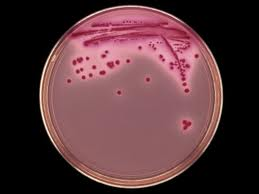Biofilm has really opened up the way we look at chronic difficult to treat infections.
Yes, this is another blog from my favorite meeting, the TIPS Plastic Surgery meeting in San Francisco.
Cultures- skin cultures, swabs, blood cultures- are likely going to be replaced. A study came out showing chronic wounds are polymicrobial. They had a study of 1400 wounds. They did cultures and found staph aureus, pseudamonas, and enterococcus were the main offenders.
But are these the real offenders? I have been taught since I was a wee medical student skin infections are almost always staph and strep. But at this meeting with biofilm experts, they postulate staph and strep are big offenders in infections, but they are not the only ones. We attribute their being the primary offending bacteria because they grow in culture.

But what if our cultures are wrong? What if the cultures have a bias towards those bacteria which we can grow on agar plates?
So new technology has evolved where we don’t have to grow bacteria out in culture to assess what bacteria are there. It is PCR technology. IBIS PCR got the gold medal award in the Wall Street Journal 2009 technology innovation award. Haven’t heard of it?
What this technology does is it analyzes a sample of blood, tissue, whatever, and it tells you what bacteria are in it. As it does not need to be grown out, it will detect the anaerobic and hard to grow bacteria better. It also detects the bacteria if you are on antibiotics (for those MDs out there reading this, this could be an end to “cultures will be negative since they are already on antibiotics.”)
They found interesting things: Bacterioides was in 100% of the surgical site infections. All cultures on these wounds had come back negative. Bacteroides just couldn’t grow in cultures or labs. They found fungi in 23% of wounds. They found a lot of cornybacterium (not thought to be a usual culprit in wounds) and found it was tenacious and hard to treat.
The PCR test gives an initial report in 6 hours. It includes information on antibiotic resistance, particularly MRSA and the like. The final report is in 3-4 days. For those MDs who have ever sent cultures, what a change to get more information back so quickly.
It is new technology, and not in most centers. Again, it is likely important for the chronic nonhealing wounds or very sick patients with infections. A challenge to this new information is determining which bacteria are bad? pathogenic? making us sick? versus which ones are just standing by?
We don’t want to treat all bacteria. We need bacteria in our body and on our skin. It reminds me of a freind who tented their house to get rid of termites. It got rid of all the bugs, not just termites. For a year after there were no spiders and other bugs, and they had big ant problems. Somehow the bug population of the house normalized again, and the ants were not a problem. So how do you get rid of just the termites? How can you get rid of just the bugs which are harming your house but leave the good ones?
And we need to beware of resistance. We hear it all the time now. No antibiotics unless you really need them. The superbugs- bacteria resistant to our normal antibiotics. Biofilm has been shown to be a very integrated organism, where they can share resistance. If we treat all bacteria with equal force, will we make bacteria which aren’t so bad into bacteria which can hurt us?
